Superior 5-color Real-Time Quantitative PCR system
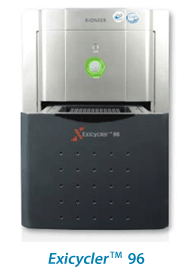 Exicycler
Exicycler™ 96 is a superior 96-well PCR system designed for real-time qPCR applications demanding the highest performance. Proprietary Light Tunnel (LT) Technology mitigates the common problem of uneven light distribution across the 96-well plate, allowing for normalization of fluorescence signals from all five channels without the use of a reference dye. The instrument is also equipped with a thermal gradient function, allowing for convenient PCR condition optimization experiments. The analysis software contains several different modules for analyzing qPCR data including: Absolute Quantification, Relative Quantification, SNP genotyping, Existence/Nonexistence and melting curve analysis. With the various modules analyses such as viral load monitoring, gene expression analysis, SNP genotyping etc. can be performed. In vitro diagnostic software packages have also been developed (KFDA, CE-IVD certified versions), which allows the instrument to be used for molecular diagnostic purposes.
Applications
 Viral load
Viral load
 Pathogen Detection
Pathogen Detection
 Oncology
Oncology
 Genetic disease detection
Genetic disease detection
 Drug resistance analysis
Drug resistance analysis
 DNA methylation study
DNA methylation study
 SNP (Single nucleotide polymorphism) Detection
SNP (Single nucleotide polymorphism) Detection
 Quantification of Gene Expression
Quantification of Gene Expression

Benefits
 Even illumination with LT (Light Tunnel)Technology
Even illumination with LT (Light Tunnel)Technology
LT delivers accurate and precise results without the need for a reference dye.
 Real 5-color multiplexing
Real 5-color multiplexing
Five band-pass filters each for excitation and emission are included for multiplexing, and since no reference dyes are necessary, true five-color multiplexing is possible.
 Real-time analysis
Real-time analysis
Use the Melting curve analysis module to measure the melting points of amplicons in real-time.
 Fast and accurate analysis
Fast and accurate analysis
The high-performance 2D CCD sensor collects information from all 96 wells simultaneously, removing any detection-lag deviations and producing accurate results.
 Temperature Gradient function
Temperature Gradient function
Enabling the temperature gradient function allows a 1~20°C temperature gradient across the plate within 40~75°C, making it easy to find the optimal annealing temperature.
 Touch Down PCR
Touch Down PCR
Time increments and temperature increment controls allow for touch-down PCR applications.
 Use various fluorescent dyes
Use various fluorescent dyes
The light source provides even excitation from 480 to 680 nm, allowing the use of various fluorescent dyes.
 Wide, linear dynamic range
Wide, linear dynamic range
The dynamic range of detection is wide at over 109.
 Intuitive and convenient software
Intuitive and convenient software
A user-centric GUI lets users design and analyze experiments with ease.
Features
 LT technology optics to remove well-to-well variation
LT technology optics to remove well-to-well variation
To eliminate the well-to-well light intensity variation associated with other systems, Bioneer has designed proprietary, patented optics: Light Tunnel technology.
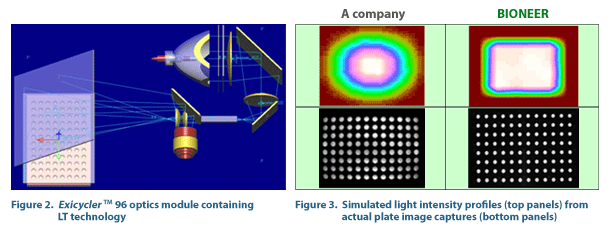
 Minimization of Ct values for maximized reproducibility
Minimization of Ct values for maximized reproducibility
By implementing the in-house designed LT technology in the optics module, well-to-well signal variation has been virtually eliminated and reproducibility has been maximized. No matter which well the reaction occurs, the Ct values will be within 0.5.
.aspx)
 True 5-Color Multiplexing
True 5-Color Multiplexing
Instruments with uneven excitation illumination must use a separate reference dye to normalize signal differences between wells, thus eliminating the usefulness of one fluorescence channel. Exicycler™ 96 does not need a reference dye, freeing all five channels for true 5 color multiplexing. The optics are designed to minimize dye interference, and long-wavelength dyes such as Cy5 can also be used thanks to the short-arc lamp light source, which emits even illumination throughout the visible spectrum. Filter sets for the most popular dyes are pre-installed, so you don’t need to worry about installing more filters.
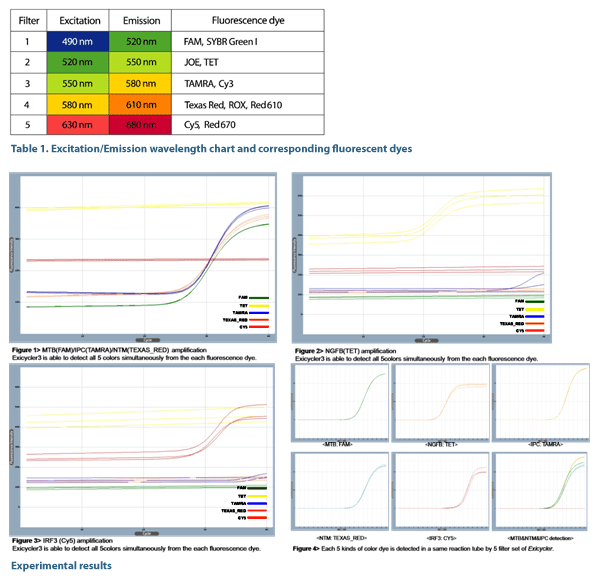
 Simultaneous well measurement
Simultaneous well measurement
The 2D CCD sensor measures all 96 wells simultaneously, eliminating detection lag between wells. Instruments that scan each well or by column have the inherent disadvantage of letting the reaction proceed while measuring, thus producing the undesirable effect of detection lag.
 High performance light source
High performance light source
The high performance short-arc lamp used in the optical module emits a brighter light compared to halogen lamps commonly used in comparable instruments. Brighter excitation means better sensitivity, and the inherent long life and light stability enable various wavelengths to be used for experiments.
 Self diagnostics
Self diagnostics
The software performs instrument diagnostics before each experiment, preventing run errors from occurring before the experiment and thus saving valuable samples and reagents from going to waste.
 Automatic Door Open/Close function
Automatic Door Open/Close function
The loading door is motorized for automatic door opening and closing, adding convenience and flexibility, as the instrument can easily be incorporated into an automated workflow.
 Thermal Gradient function
Thermal Gradient function
The thermal gradient function allows for rapid cycle condition optimization, increasing the convenience.
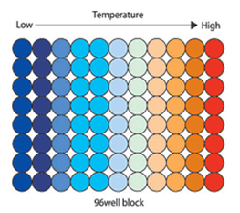
 Intuitive and full-featured software
Intuitive and full-featured software
A user-friendly interface provides convenience in all steps of the qPCR process including protocol setup, data analysis and result storage. Data analysis modules including Absolute Quantification, Relative Quantification, Existence /Nonexistence, SNP Genotyping and melting curve analysis are included standard for flexibility in data analysis.
Experimental Results
|
1) Viral load testing (Absolute Quantification) |
2) Gene expression (Relative Quantification) |
.aspx) |
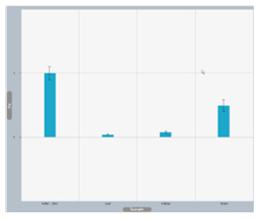 |
By inter olating the Ct value of samples on the standard curve,
the actual quantities in amples are measured. |
The relative expression levels of a target gene are compared
among different samples. |
|
3) Pathogen detection (Existence/Nonexistence) |
4) Mutation detection and personalized medicine
(SNP Genotyping) |
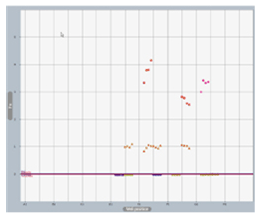 |
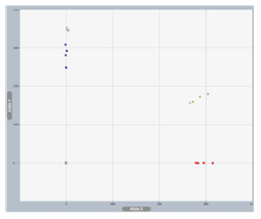 |
|
The existence and nonexistence of pathogenic viruses in samples are determined. |
Two types of homozygote and the heterozygote are determined for a SNP site. |
|
5) Melting curve analysis |
|
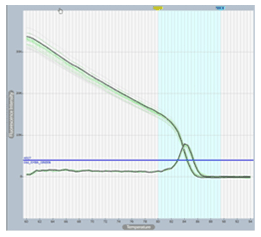 |
|
|
Simple dissociation curve data collection and viewing |
|